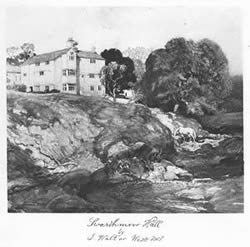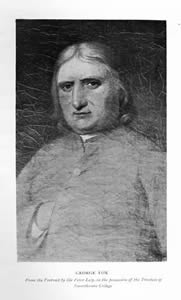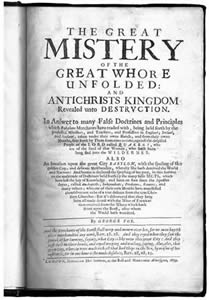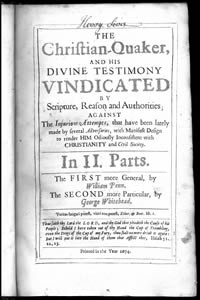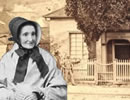 |
 |
|
In 1642, as Abel Tasman sighted the southern coast of Tasmania, and as the first shots were fired in the English Civil War, the eighteen-year-old George Fox had a spiritual awakening. Ashamed of himself after revelry with friends at a fair, he had a dream in which God said to him: ‘Thou seest how young people go together into vanity, and old people into the earth; thou must forsake all, young and old, keep out of all, and be as a stranger unto all’. 1 He left home, and wandered from place to place seeking guidance and solace. His relatives counselled him to marry. There was pressure for him to enlist in the army. The Church of England left him cold: he referred to its ministers as ‘priests’ and its buildings as ‘steeple houses’. He was exasperated by one ‘priest’ who simply counselled him to smoke tobacco and sing psalms. The Civil War was turning the world upside down. The structures of authority were breaking down, and in 1649 Charles I was executed and a Republic established. There was a religious free-for-all, and the Civil War and Commonwealth period (1649-1660) saw the emergence of a range of sects and a fair few cranks. George Fox gathered around him other free spirits and seekers after the truth. He interrupted sermons and rebuked members of the ruling class. In 1650 he was arrested in Derby on the charge of uttering blasphemous opinions. He and his friends bade the bench ‘to tremble at the word of Lord’. On this account Justice Gervase Bennet dubbed them Quakers. 2 For a time the Quakers were regarded as a subversive force. Fear of religious anarchy was a factor in the restoration of the monarchy in 1660. The Friends in the Truth, as they called themselves, were in fact moving towards a pacifist position. As Fox informed Charles II in 1661, ‘all bloody principles and practices we … do utterly deny, with all outward wars and strife, and fightings with outward weapons, for any end, or under any pretence whatsoever; and this is our testimony to the world’. 3 The refusal to bear arms, along with the refusal to swear oaths and to do ‘hat honour’, that is to raise their hats to social superiors, inevitably created problems with the authorities. 4 The Conventicle Act of 1664, which sought to inhibit worship outside the Anglican Church, led to more systematic harassment. Many Quakers left England for the New World. Their missionary zeal was naturally combined with the desire to establish communities in which they could practice their religion without fear of persecution. A group of Quakers led by William Penn (1644-1718), a well-educated and well-heeled convert to the movement, acquired land in the western part of New Jersey and in 1681 obtained a charter to create their own colony of Pennsylvania. Over the decades the Religious Society of Friends - to give the Quakers their correct name - began to cohere as a movement. George Fox’s marriage to Margaret Fell in 1669 brought him emotional and financial security. Women figured prominently in the movement, and were allowed to preach. Margaret Fell had organisational skills, and for a time her house at Swarthmoor in Westmorland was the headquarters of Quakerism.
The system of Monthly and General Meetings evolved, and the focus shifted to London and a number of regional centres. Some second generation Quakers, like William Penn, were well-connected in elite circles. The Toleration Act of 1689 brought an end to the worst period of persecution. By the time of Fox’s death in 1691, though still facing discrimination and harassment, the Quakers were winning grudging respect for their honesty and sincerity.
|
The great mistery of the great whore unfolded, and antichrists kingdom revealed unto destruction in answer to many false doctrines and principles... against the despised people of the Lord called Quakers... / by George Fox.
William Penn Frontispiece Janney, S.M. The life of William Penn, Phiadelphia, Lippincott, 1852. University of Tasmania Library special and Rare Materials Collections
|
Footnotes:
|
|
Quaker Life in Tasmania Home | UTAS Library Home
| © University of Tasmania ABN 30 764 374 782 CRICOS Provider Code 00586B | Copyright & Disclaimers | Accessibility | Site Feedback International Students | Future Students | Research | The Graduate School | Library Home |
